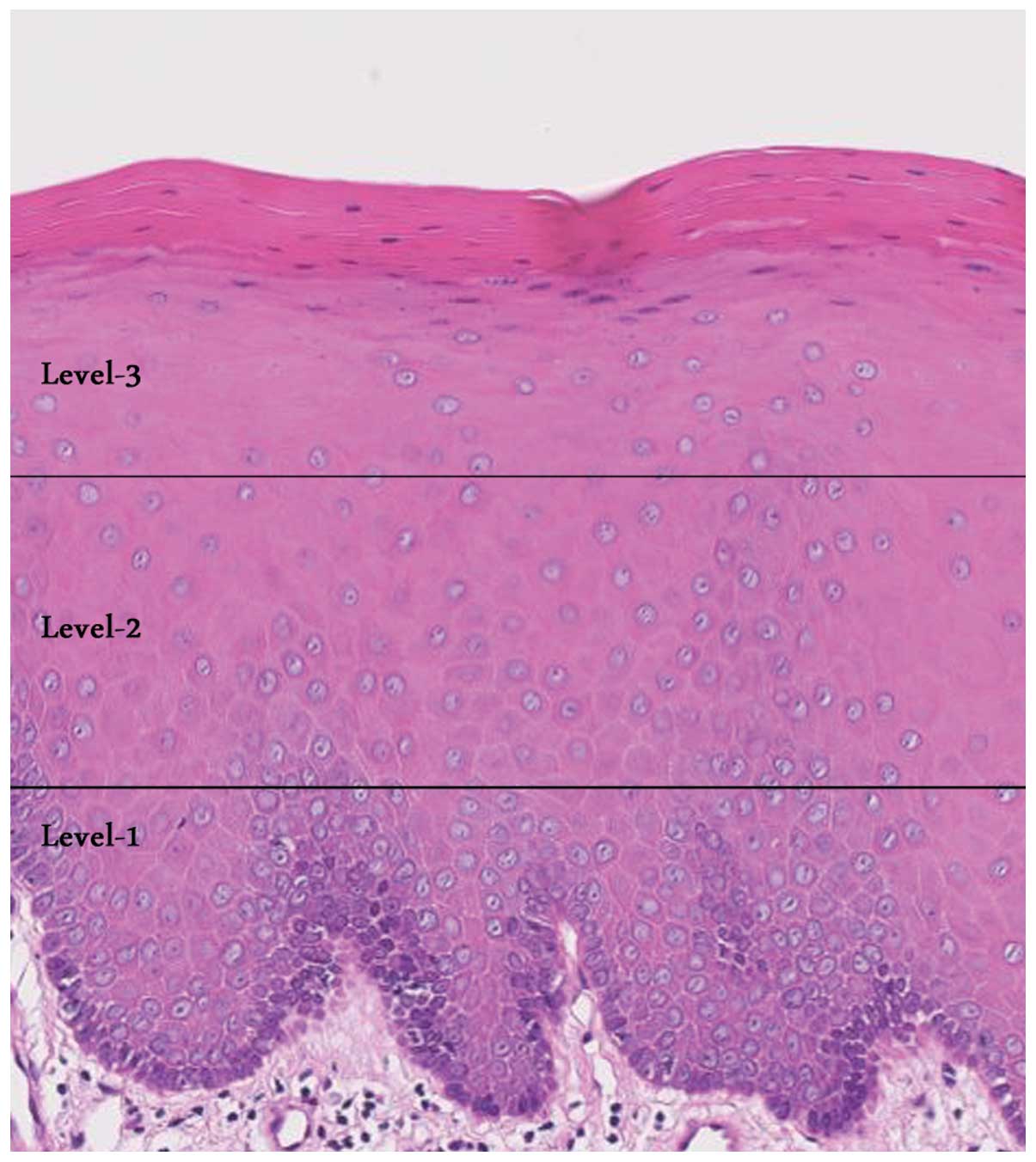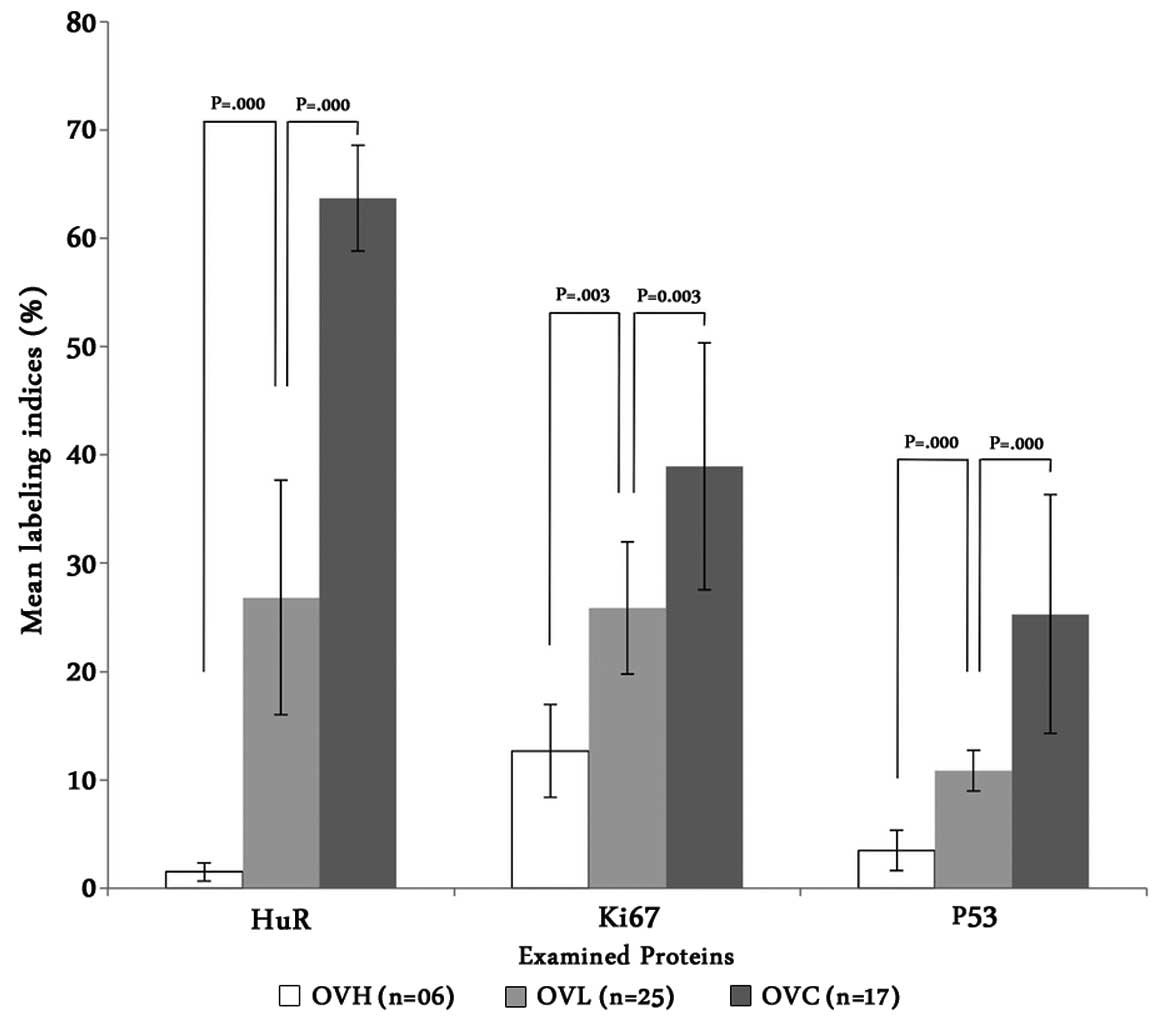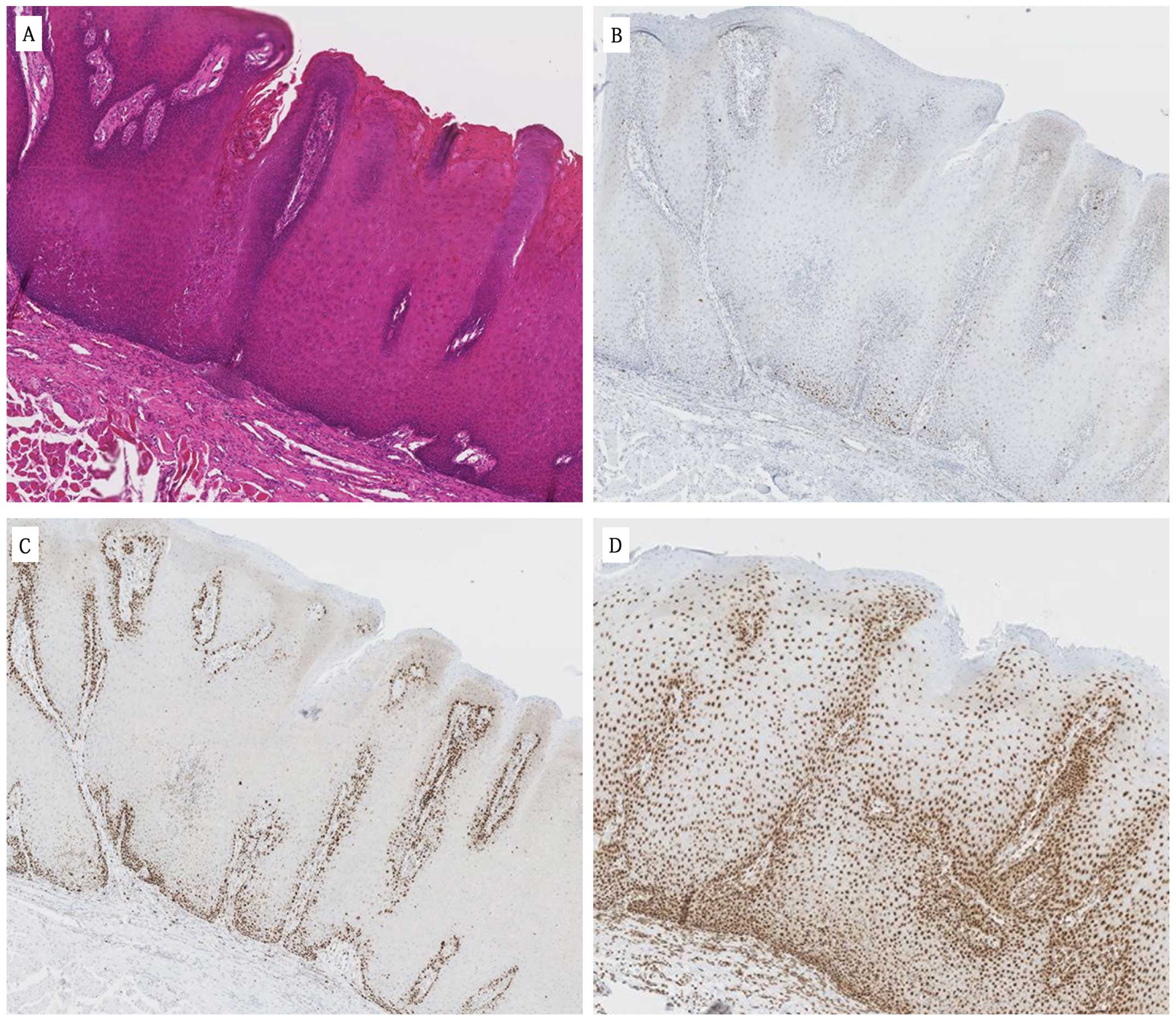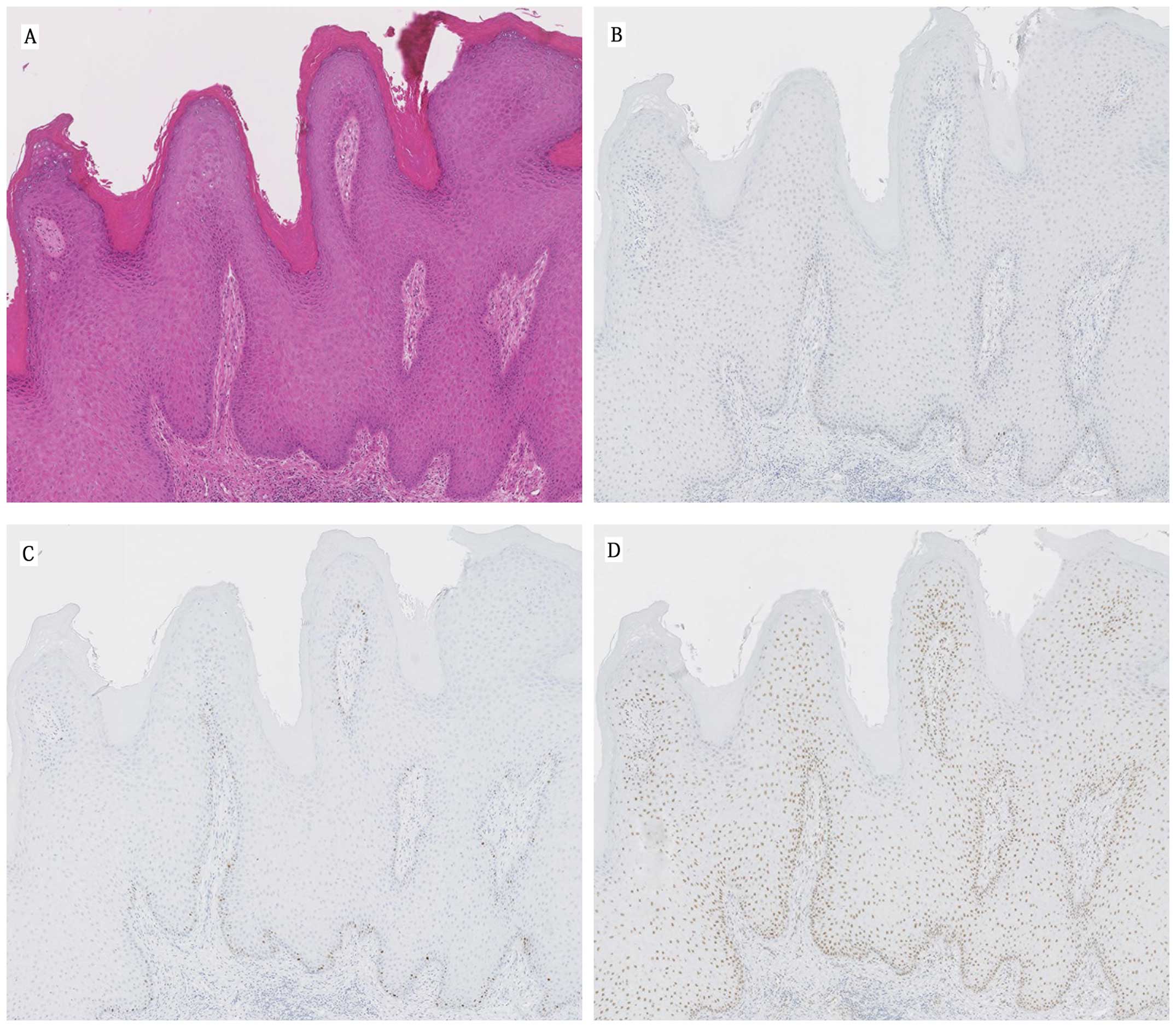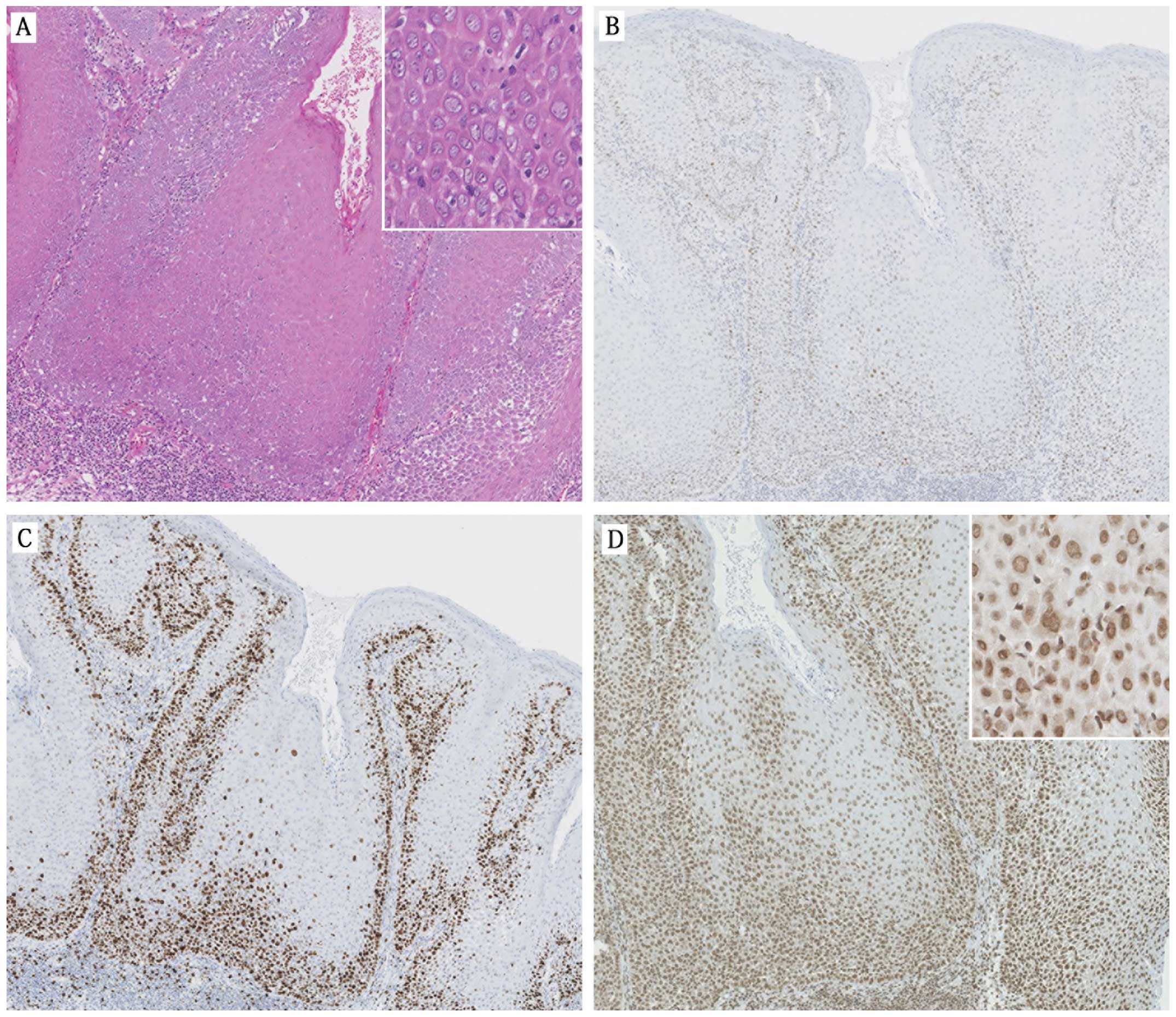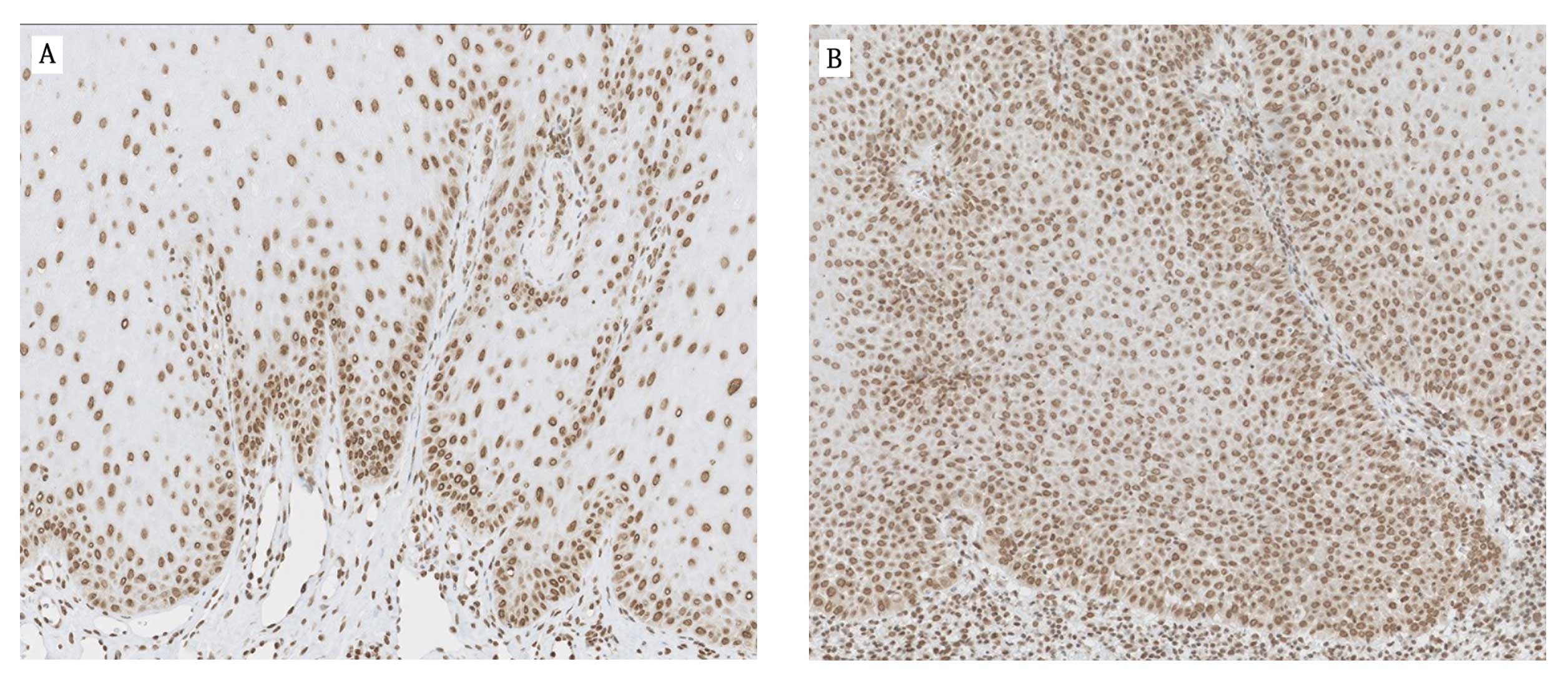|
1
|
Ackerman LV: Verrucous carcinoma of the
oral cavity. Surgery. 23:670–678. 1948.PubMed/NCBI
|
|
2
|
Fertilo A and Recher G: Ackerman’s tumor
(verrucous carcinoma) of the larynx: a clinicopathologic study of
77 cases. Cancer. 46:1617–1630. 1980.
|
|
3
|
Batsakis JG, Hybels R, Crissman JD and
Rice DH: The pathology of head and neck tumors: verrucous
carcinoma, Part 15. Head Neck Surg. 5:29–38. 1982. View Article : Google Scholar : PubMed/NCBI
|
|
4
|
Medina JE, Dichtel W and Luna MA:
Verrucous-squamous carcinomas of the oral cavity. A
clinicopathological study of 104 cases. Arch Otolaryngol.
110:437–440. 1984. View Article : Google Scholar : PubMed/NCBI
|
|
5
|
Rebane A, Aab A and Steitz JA: Transportin
1 and 2 are redundant nuclear import factors for hnRNP A1 and HuR.
RNA. 10:590–599. 2004. View Article : Google Scholar : PubMed/NCBI
|
|
6
|
Fan XC and Steitz JA: HNS, a
nuclear-cytoplasmic shuttling sequence in HuR. Proc Natl Acad Sci
USA. 95:15293–15298. 1998. View Article : Google Scholar : PubMed/NCBI
|
|
7
|
Brennan CM, Gallouzi IE and Steitz JA:
Protein ligands to HuR modulate its interaction with target mRNAs
in vivo. J Cell Biol. 151:1–14. 2000. View Article : Google Scholar : PubMed/NCBI
|
|
8
|
Erkinheimo TL, Lassus H, Sivula A, et al:
Cytoplasmic HuR expression correlates with poor outcome and with
cyclooxygenase 2 expression in serous ovarian carcinoma. Cancer
Res. 63:7591–7594. 2003.PubMed/NCBI
|
|
9
|
Denkert C, Weichert W, Pest S, et al:
Overexpression of the embryonic-lethal abnormal vision-like protein
HuR in ovarian carcinoma is a prognostic factor and is associated
with increased cyclooxygenase 2 expression. Cancer Res. 64:189–195.
2004. View Article : Google Scholar : PubMed/NCBI
|
|
10
|
Hasegawa H, Kakuguchi W, Kuroshima T, et
al: HuR is exported to the cytoplasm in oral cancer cells in a
different manner from that of normal cells. Br J Cancer.
100:1943–1948. 2009. View Article : Google Scholar : PubMed/NCBI
|
|
11
|
Szymańska K and Hainaut P: TP53 and
mutations in human cancer. Acta Biochim Pol. 50:231–238. 2003.
|
|
12
|
Pavelic ZP, Li YQ, Stambrook PJ, et al:
Overexpression of p53 protein is common in premalignant head and
neck lesions. Anticancer Res. 14:2259–2266. 1994.PubMed/NCBI
|
|
13
|
Shin DM, Kim J, Ro JY, Hittelman J, Roth
JA, Hong WK and Hittelman WN: Activation of p53 gene
expression in premalignant lesions during head and neck
tumorigenesis. Cancer Res. 54:321–326. 1994.
|
|
14
|
Wang LD, Shi ST, Zhou Q, et al: Changes in
p53 and cyclin D1 protein levels and cell proliferation in
different stages of human esophageal and gastric-cardia
carcinogenesis. Int J Cancer. 59:514–519. 1994. View Article : Google Scholar : PubMed/NCBI
|
|
15
|
MacCallum DE and Hall PA: The location of
pKi67 in the outer dense fibrillary compartment of the nucleolus
points to a role in ribosome biogenesis during the cell division
cycle. J Pathol. 190:537–544. 2000. View Article : Google Scholar : PubMed/NCBI
|
|
16
|
Gerdes J, Lemke H, Baisch H, Wacker HH,
Schwab U and Stein H: Cell cycle analysis of a cell
proliferation-associated human nuclear antigen defined by the
monoclonal antibody Ki-67. J Immunol. 133:1710–1715.
1984.PubMed/NCBI
|
|
17
|
Braun N, Papadopoulos T and
Müller-Hermelink HK: Cell cycle dependent distribution of the
proliferation-associated Ki-67 antigen in human embryonic lung
cells. Virchows Arch B Cell Pathol Incl Mol Pathol. 56:25–33. 1988.
View Article : Google Scholar : PubMed/NCBI
|
|
18
|
Woźniak A, Golusiński W, Kaczmarek E and
Kaczmarek J and Kaczmarek J: Prognostic significance of Ki 67 and
PCNA expression in laryngeal squamous cell carcinoma (morphometric
evaluation of labelling index-L1). Otolaryngol Pol. 56:437–443.
2002.(In Polish).
|
|
19
|
Gimenez-Conti IB, Collet AM, Lanfranchi H,
et al: p53, Rb, and cyclin D1 expression in human oral verrucous
carcinomas. Cancer. 8:17–23. 1996. View Article : Google Scholar : PubMed/NCBI
|
|
20
|
Saito T, Nakajima T and Mogi K:
Immunohistochemical analysis of cell cycle-associated proteins p16,
pRb, p53, p27 and Ki-67 in oral cancer and precancer with special
reference to verrucous carcinomas. J Oral Pathol Med. 28:226–232.
1999. View Article : Google Scholar : PubMed/NCBI
|
|
21
|
Cho NP, Han HS, Soh Y, Lee KY and Son HJ:
Cytoplasmic HuR over-expression is associated with increased
cyclooxygenase-2 expression in laryngeal squamous cell carcinomas.
Pathology. 39:545–550. 2007. View Article : Google Scholar : PubMed/NCBI
|
|
22
|
Cho NP, Han HS, Soh Y and Son HJ:
Overexpression of cyclooxygenase-2 correlates with cytoplasmic HuR
expression in salivary mucoepidermoid carcinoma but not in
pleomorphic adenoma. J Oral Pathol Med. 36:297–303. 2007.
View Article : Google Scholar : PubMed/NCBI
|
|
23
|
Heinonen M, Bono P, Narko K, et al:
Cytoplasmic HuR expression is a prognostic factor in invasive
ductal breast carcinoma. Cancer Res. 65:2157–2161. 2005. View Article : Google Scholar : PubMed/NCBI
|
|
24
|
Niesporek S, Kristiansen G, Thoma A, et
al: Expression of the ELAV-like protein HuR in human prostate
carcinoma is an indicator of disease relapse and linked to COX-2
expression. Int J Oncol. 32:341–347. 2008.PubMed/NCBI
|
|
25
|
Gallouzi IE and Steitz JA: Delineation of
mRNA export pathways by the use of cell-permeable peptides.
Science. 294:1895–1901. 2001. View Article : Google Scholar : PubMed/NCBI
|















